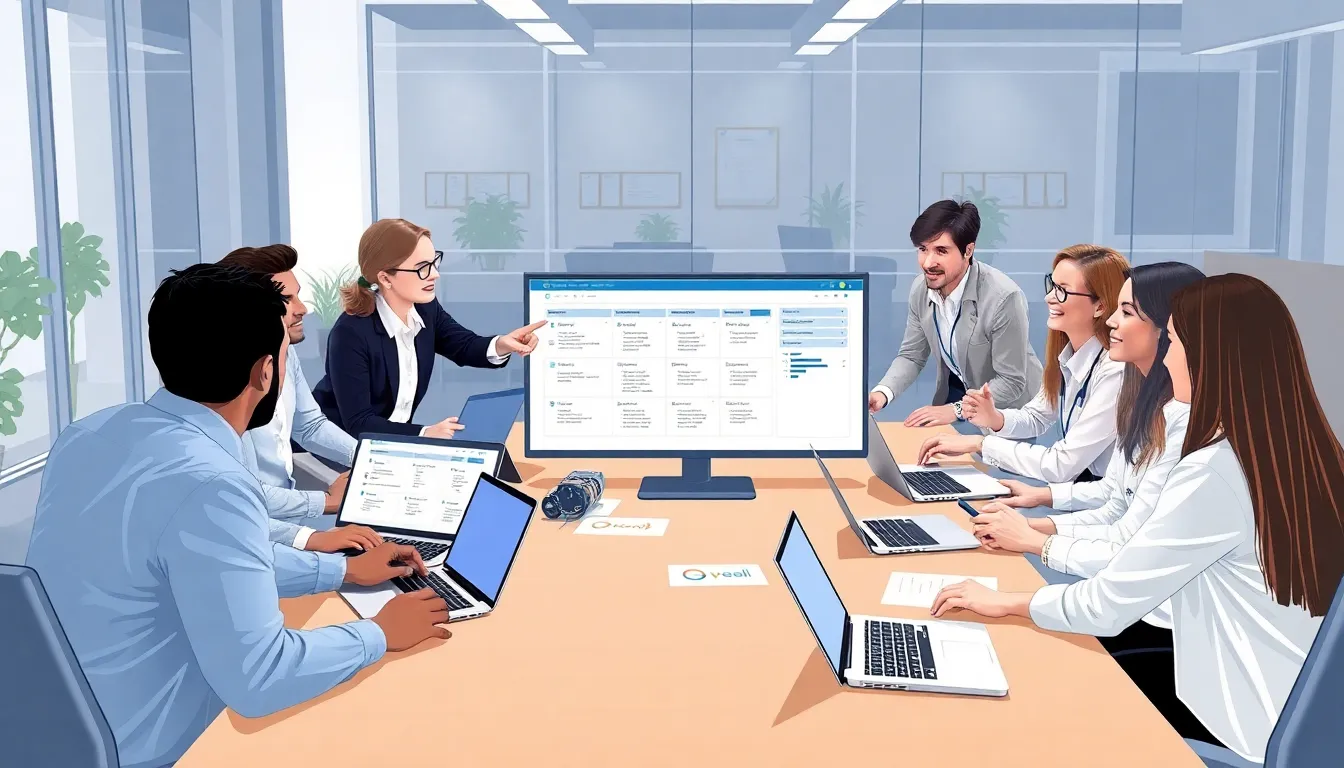In today’s fast-paced world, managing tasks can feel like herding cats—chaotic and downright impossible. Enter task management tools, the superheroes of productivity that swoop in to save the day. These digital sidekicks not only help organize to-do lists but also transform procrastination into action faster than you can say “deadline.”
Imagine a life where you never forget a meeting or lose track of that brilliant idea you had at 2 a.m. With the right task management tool, it’s not just a dream; it’s a reality. From simple checklists to robust project management platforms, these tools are designed to streamline workflows and make juggling responsibilities a breeze. So, buckle up and get ready to discover how these nifty gadgets can turn task chaos into a symphony of productivity.
Table of Contents
ToggleOverview of Task Management Tools
Task management tools offer users a range of functionalities that streamline organization and productivity. These tools assist in prioritizing tasks through categorization and deadline features. Users benefit from simple task lists, allowing individuals to track daily activities with ease.
Comprehensive platforms also exist, creating collaboration opportunities for teams. Features typically include shared resources, progress tracking, and communication channels. A structured approach promotes accountability while ensuring everyone is aligned with project goals.
Various types of task management tools cater to different needs. For individuals, basic applications provide quick task entry and reminders. In contrast, large teams may require more sophisticated software that integrates with other tools. These platforms often include functionalities like Gantt charts and Kanban boards to visualize workflow.
The integration of automation in these tools can significantly boost efficiency. Automation helps reduce repetitive tasks, allowing users to focus on high-priority assignments. Additionally, real-time updates ensure everyone stays informed of changes, fostering collaboration and teamwork.
Choosing the right task management tool plays a pivotal role in enhancing productivity. Factors to consider include usability, scalability, and the specific features required. Evaluating options based on these criteria enables users to implement solutions tailored to their unique workflows. With proper selection, task management tools have the potential to transform how individuals and teams accomplish their objectives.
Benefits of Using Task Management Tools

Task management tools provide multiple advantages that significantly enhance productivity. They equip users with methods to organize tasks and improve team dynamics effectively.
Improved Organization
Organization becomes more straightforward with task management tools. Users can categorize tasks by priority, deadlines, or project type. This clear structure helps individuals and teams grasp which tasks require immediate attention. Visual features such as lists, boards, and calendars promote better visibility of obligations and deadlines. By organizing tasks, individuals can maintain focus, reduce overwhelm, and enhance overall efficiency. Simplified navigation through tasks fosters a more systematic approach to daily operations.
Enhanced Collaboration
Collaboration flourishes through task management tools. These tools enable team members to coordinate seamlessly, keeping everyone on the same page. Shared task lists allow contributions from various users, creating a unified work environment. Real-time updates ensure participants are informed about task progress, enhancing accountability. Comments or feedback features encourage communication around tasks, supporting effective problem-solving. Through enhanced collaboration, teams can accelerate project timelines and achieve collective goals efficiently.
Types of Task Management Tools
Choosing the right type of task management tool can greatly enhance productivity. Various applications cater to different needs and preferences.
To-Do List Applications
To-do list applications offer a straightforward way to manage daily tasks. Users can create, prioritize, and check off tasks, fostering a sense of accomplishment. Many of these applications allow for reminders, ensuring that deadlines aren’t overlooked. Some popular options include Todoist, Microsoft To Do, and Google Tasks. These tools serve well for individuals who prefer a simple, minimalist approach to organization, helping them focus on completing essential tasks without distractions.
Project Management Software
Project management software provides a comprehensive solution for organizing complex projects. Teams can utilize features like task assignments, timelines, and collaborative tools to enhance coordination. Popular platforms such as Asana, Trello, and Monday.com facilitate visualization of workflows through boards, timelines, and charts. These tools support multi-user environments, allowing for real-time updates and better communication among team members. Prioritization remains crucial, as these applications help align tasks with project goals and deadlines, improving overall project efficiency.
Key Features to Look For
Selecting the right task management tool hinges on identifying key features that enhance usability and integration.
User-Friendly Interface
A user-friendly interface simplifies navigation and improves task management experiences. Look for intuitive designs that require minimal training. Features like drag-and-drop functionality streamline task organization. Customization options allow users to tailor dashboards according to specific workflows. Clarity in layout promotes efficient prioritization, enabling users to identify urgent tasks quickly. Responsive design ensures effective use across devices, catering to diverse needs.
Integration Capabilities
Strong integration capabilities enhance a task management tool’s versatility. Choose tools that connect seamlessly with commonly used applications like email platforms and calendars. This integration streamlines workflows, reducing the need to switch between multiple applications. Real-time data synchronization keeps task lists and project updates current, minimizing miscommunication. Compatibility with file sharing services allows for easy document access, fostering collaboration. Effective integration of automation features enhances productivity by minimizing repetitive tasks.
Popular Task Management Tools Reviewed
Numerous task management tools simplify day-to-day organization. Below are two popular options that cater to different needs.
Tool A: Features and Pricing
Todoist stands out for its user-friendly interface and versatility. This tool allows users to create tasks, set deadlines, and prioritize effectively. It offers features like project categorization and collaboration capabilities. Users can access Todoist for free, while premium options start at $3 per month, unlocking advanced functionalities such as reminders and productivity tracking. Todoist integrates seamlessly with various platforms like Google Calendar, enhancing its usability.
Tool B: Features and Pricing
Asana excels in managing complex projects with its visual organizational tools. This platform supports task assignment, timelines, and progress tracking, benefiting team collaboration. Asana’s free version accommodates small teams, while premium plans begin at $10.99 per user per month. Enhanced features, like Gantt charts and automation, come with the subscription options. Asana’s ability to integrate with tools like Slack and Microsoft Teams streamlines communication, enabling cohesive teamwork.
Task management tools play a vital role in navigating the complexities of modern productivity. By offering tailored solutions for both individuals and teams, these tools foster better organization and collaboration. Users can choose from a wide range of applications that fit their specific needs, whether it’s a simple to-do list or a comprehensive project management platform.
The right tool can significantly enhance efficiency by automating repetitive tasks and providing real-time updates. With the ability to prioritize and categorize tasks, individuals and teams can focus on what truly matters. Embracing these tools not only streamlines workflows but also empowers users to reach their goals with confidence and clarity.

